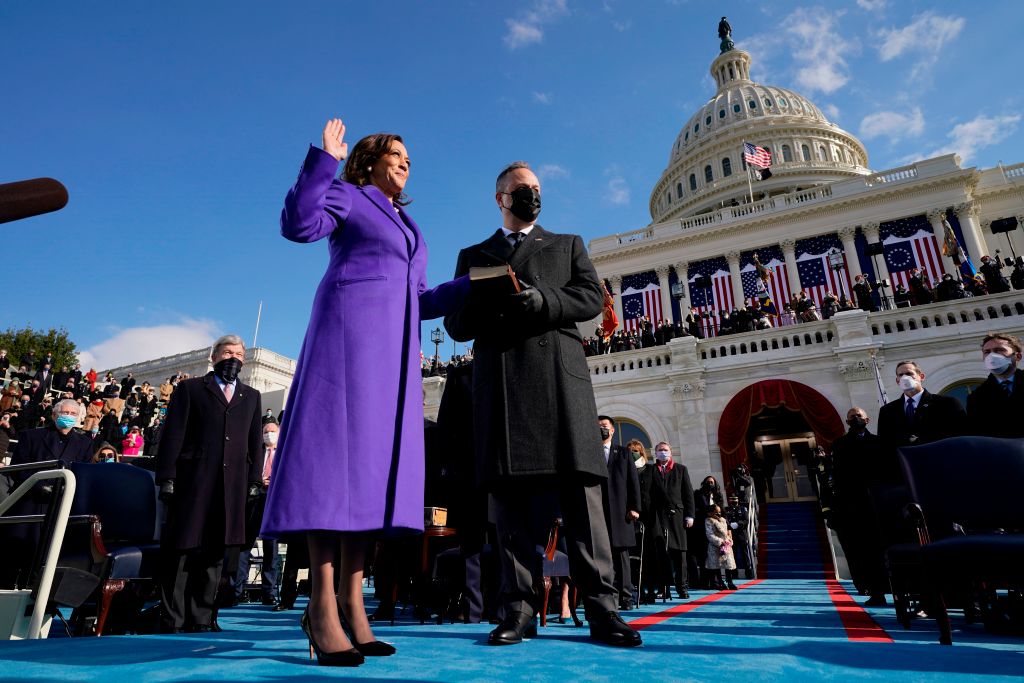Black Girls Fly: Remembering Bessie Coleman, The 1st African American Woman Pilot

Source: George Rinhart / Getty
O
ver the weekend, Black women pilots and fans of Black women pilots celebrated June 15, 2021. It was the day that one Black woman, Bessie Coleman, took it upon herself to ensure Black girls could fly. In Paris, France, Coleman earned her pilot’s license, becoming the first Black woman to do so.
Born Jan. 26, 1892 in Atlanta, Texas, into a family of sharecroppers, Coleman was one of her parents’ 13 children—but across the distances of place and time, she was one in a million. Defying all odds –in the U.S. at the time, no Black people or women were allowed into aviation school which is why she traveled to Paris to study–Coleman paved the way for generations of Black women to soar across the skies.
It surely was not the obvious choice for a woman who lived with multiple forms of discrimination and a childhood firmly tied to the land, but it was a definitive and intentional one. But as a young woman, Coleman relocated to Chicago to live with her brothers, and it was there in the City of Big Shoulders, that her fascination with aviation blossomed.
Initially in Chicago to study at the Burnham School of Beauty Culture, Coleman worked as a manicurist in a local barbershop. But she became more and more captivated by the stories of World War I pilots. Her brother was a World War I veteran, and he told his sister how he’d seen French women fly planes during his time in combat.
“That’s it… You just called it for me!” Coleman explained. The career in beauty was swiftly abandoned for what must have seemed to most as a pie-in-the-sky dream—a career in aviation.

Source: Michael Ochs Archives / Getty
But that’s exactly what Coleman did. After facing numerous rejections from aviation schools in the anti-Black, anti-woman United States, Coleman headed to Paris, France, in 1920 and enrolled at the Caudron Brothers’ School of Aviation. On June 15 of the following year, she would earn her pilot’s license from the Fédération Aéronautique Internationale, the first Black woman to do so.
Known for her daring aerial maneuvers and unique parachuting techniques, Coleman created an incredible career for herself performing, but her own success was not enough for her. Returning to the U.S. where she hadn’t been allowed to study, the historic aviator found work as a barnstorming pilot, thrilling audiences at aviation shows during the popular “Barnstorming” era of the 1920s.
By 1922, Bessie Coleman made history again, this time with her first public flight where she cruised in a borrowed Curtiss JN-4D Jenny at Curtiss Field in Long Island. But her popularity really came down to her majestic maneuvers including the loop-the-loop, figure-8s and flying upside down. Those aerial tricks earned had her dubbed with several nicknames including “Brave Bessie,” “Queen Bess” and “The Only Race Aviatrix in the World.”
Even still, Coleman’s individual success was not enough. Queen Bessie returned to the land of her birth deeply committed to inspiring others to fly, and most of all, destroying the racial and gender barriers in aviation. She performed thrilling aerial displays across the country, refusing to speak at venues that segregated or discriminated against African Americans.
In early 1923, however, Bessie Coleman faced a significant challenge. On one flight, her airplane’s engine suddenly failed, resulting in a crash that left her with a broken leg, cracked ribs and facial cuts. Thankfully, Coleman recovered fully, and she remained undeterred from pursuing her passion for flying. By 1925, she resumed performing daring aerial maneuvers, eventually saving enough funds to purchase her own aircraft, a Jenny JN-4 equipped with an OX-5 engine
It all made for a triumphant return to her hometown in Texas. Coleman’s fame continued to grow, and in a pivotal moment she took a stand against segregation by insisting on a single entrance for all attendees at her shows, rather than separate entrances for African Americans and white spectators. After negotiations, organizers agreed to her terms, although seating remained segregated. Coleman’s principled stance further solidified her reputation as a fearless advocate for equality, alongside her accomplishments in aviation.
Embarking on a nationwide tour, Bessie Coleman gave flight lessons in between dazzling aerial performances. And at no point did she ever stop passionately advocating for African Americans and women to be allowed a place in the aviation field. Her relentless determination led her to realize another of her dreams: establishing a flight school.
But tragedy struck in 1926. During a test flight in Jacksonville, Florida, a wrench jammed the controls of the aircraft she was in. Unbelted, Coleman fell from the open cockpit and tragically lost her life at the age of 34.
Still, although her life was cut short, Bessie Coleman’s legacy continues to inspire people worldwide. Her courage, determination and refusal to accept limitations based on race or gender opened doors for future generations of aviators and remains a testament to the power of following one’s dreams against all odds.
SEE MORE:
Honoring The Contributions Of Black Women In The Fight For Social Justice
Lessons We Can Learn From Black Teachers Of The Civil Rights Era
The post Black Girls Fly: Remembering Bessie Coleman, The 1st African American Woman Pilot appeared first on NewsOne.





